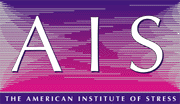


“The international audience was most impressed with the paper on Medical Resonance Therapy Music® presented in Moscow two weeks ago, at the World Health Organization (WHO) conference
‘Society, Stress and Health’.
I have also reviewed the scientific research on the benefits provided by this approach in a variety of medical disorders including:
These are established improvements in a very wide range of diseases.
You inquired as to my opinion about the possible advantages in using Medical Resonance Therapy Music® for problems related to job stress. I think it is obvious that it would be advantageous to have workers with less headaches, sleep problems, and other stress related disorders that have improved with this approach and the best way to find it out is to try it.
Stress is also a major cause of automobile and traffic accidents, and we will be devoting an entire day to this subject at our Eighth International Montreux Congress on Stress in Switzerland, February, 18-24, 1996. Increased job stress has been clearly correlated with a higher incidence of heart attacks and hypertension in very scientific studies.
Job stress has been estimated to cost American industry in excess of $300 billion annually, as assessed by reduced productivity, increased absenteeism, and escalating medical insurance and workers’ compensation payments. Put into perspective, that’s more than 10 times the cost of all strikes combined, or the total net profits of all the Fortune 500 companies. That is why stress-management training has steadily become the leading priority for Employee Assistance Programs.
A top objective of the Public Health Service’s Year 2000 National Health Objectives report is that at least 40 percent of work sites employing more than 50 persons should be providing stress management programs for workers.
However, stress reduction programs must be carefully tailored to the specific needs and demographics of the group being served. When properly designed and implemented they can lead to significantly reduced illness and absenteeism while increasing productivity and bottom-line profits. They also improve the health of both workers and employers, by fostering a spirit of mutual respect and cooperation that motivates the achievement of common goals, and markedly enriches the quality of life in the workplace. I have lectured and written a great deal about the adverse health effects of occupational stress, and how to design an effective stress reduction program over the past 15 years, both here and abroad. If any of the corporations you are in contact with in Japan or Germany are interested in stress in the workplace, I would be pleased to discuss any aspect of this with them.
There is increasing evidence to support the notion that Medical Resonance Therapy Music® might be useful for stress reduction in occupational settings, just as it has provided benefits in various medical situations. I will be lecturing in October, about very recent developments in the field of subtle energy medicine at a symposium organized by the Institute of Theoretical Physics and Advanced Studies for Biophysical Research, in Florida. Some of these new findings suggest mechanisms of action which could help explain the wide variety of rewards attributed to the Medical Resonance Therapy Music®. As I indicated when we last met, these effects may be achieved through previously unsuspected communication pathways, and this will likely be a subject of discussion at this meeting. I first became interested in this as a result of my research on relationships between stress and cancer, and B. Nordenstroem’s demonstration of an electrical circulatory system (BCEC – Biologically Closed Electric Circuits).
Bjoern is a good friend and has served as the Chairman of the Selection Committee for the Nobel Prize in Physiology and Medicine, and as the Chairman of the Faculty of Radiology at Karolinska Institute in Stockholm. His research has demonstrated that electromagnetic energy is a basic and dominating factor for the organization of structure and function in biochemical and physiologic processes. Therefore, in order to fully comprehend biology, a comprehensive understanding of the role of biologically closed electrical circuits for energy transfer and communication within the organism is imperative. Here physics comes into the picture insofar as we must also understand BCEC systems as they function on metric to molecular and even atomic levels.
Perhaps Peter Hübner and some of his colleagues in the Micro Music Laboratories® might want to attend or even participate in this Florida conference, since developments there might suggest a modus operandi for the Medical Resonance Therapy Music®.”
124 PARK AVENUE YONKERS, NEW YORK 10703
PHONE 914-963-1200
FAX 914-965-6267